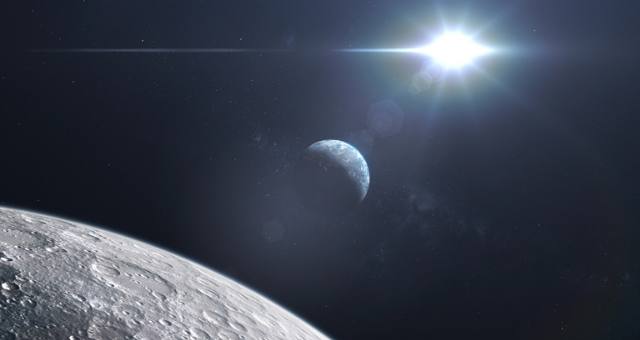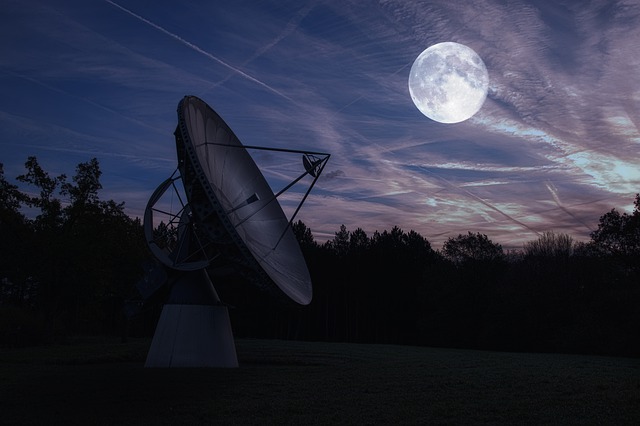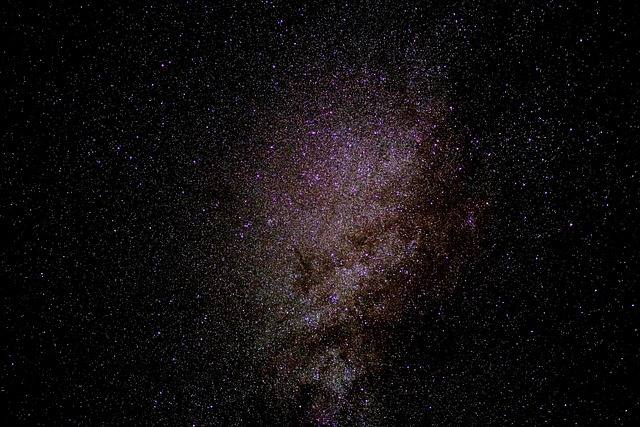*This post may contain affiliate links. This means we may make a commission if you purchase an item using one of our links*
The moon is a non-luminous object because it doesn’t create its own light; instead, reflecting around 12% of the radiation it soaks up from the Sun. The moon appears bright in our night sky because of its proximity to our planet, but many moons are far brighter within the solar system. Still, none of these satellites are classed as luminous objects because they all rely on external sources to shine.
Learn why the moon is a non-luminous object, where its light comes from, and whether a moon could ever become a luminous object. Plus, discover the wealth of luminous objects within our Universe and how they generate enough energy to create their own light.
Why Is The Moon Not A Luminous Object?
Table of Contents

The moon does not emit its own light and is therefore known as a non-luminous object. For a thing to be considered luminous, it must emit its own light, which the moon does not. Instead, it is a body that reflects light from the Sun.
The term “luminous” refers to an object’s ability to generate its own light, emissions of which can take many forms.
For example, fluorescent materials absorb one form of energy, such as visible or UV light, then re-emit the energy on a different wavelength to produce a color such as green or blue. Meanwhile, phosphorescent materials take energy from external sources like UV lamps or sunlight and slowly release it as visible light over time.
Luminescent is a term often applied vaguely to anything that shines or appears bright, but this isn’t strictly true. An object can only be luminous if it creates its own light source. The moon reflects light from the Sun and requires this external source to “emit” its own light. A large rock might not seem like something that would reflect light, but most objects reflect light to some extent.
The degree of reflectiveness an object possesses is known as its albedo – the fraction of light that the object can reflect. For example, the moon has an albedo of 0.12, meaning it reflects around 12% of the total radiation absorbed from the Sun.
Our moon appears as one of the brightest objects in the night sky thanks to its close proximity to our planet, but there are far brighter moons within the solar system.
Enceladus, one of Saturn’s moons, for example, has an albedo of 0.99, which means that it is able to reflect 99% of the Sun’s energy thanks to a surface composed of ice and snow.
Can A Moon Be Luminous?

A moon is an object that orbits a planet or other non-star entity, such as an asteroid or a dwarf planet. We often call objects that orbit other objects satellites. The moon is a natural satellite because its size, composition, and location occurred through scientific processes rather than being influenced by man.
The object that a satellite orbits is called its primary; both of these entities often form at a similar time as smaller clumps of gas and dust accrete away from the primary. Eventually, these clumps begin to orbit the primary and become its moon.
Still, not all moons form this way. Some are created when a planet gets hit by another space object. For example, many scientists believe that Earth’s moon formed when a Mars-sized object called Theia crashed into our planet. Other moons may once have been asteroids traveling through space that got too close to a planet and became entrapped by gravity, thus forming an orbit.
Most moons consist mainly of rock, but others have large amounts of gas and ice in their bodies. Some even have geological activity, such as volcanoes, littering their surface. Still, more is needed to qualify them as luminous objects. In fact, the only luminous object in our solar system is the Sun.
What Makes A Celestial Body Luminous?
Celestial Bodies, such as stars, are luminous because they create heat and light energy through a process called nuclear fusion. In simple terms, nuclear fusion is a process where two light nuclei combine to become heavier, releasing massive amounts of energy. In the Sun’s core, enough protons collide with one another to merge and form a nucleus that can generate an enormous amount of energy.
It’s hard to comprehend, but every single second, our Sun is converting four million tons of materials into energy
through this process, which creates an enormous amount of heat and light – which makes the Sun shine.
The Sun engages in nuclear fusion because the heat and pressure at its center are so great that the protons can hit one another hard enough to form a bond. For this to happen, there has to be a massive concentration of matter in a given area to generate a strong enough gravity.
Thanks to this gravity, stars will spend most of their lives repeating this process of combining atoms at their core. That is, until they run out of material to fuse and enter an end-of-life state.
Are Stars The Only Celestial Bodies That Are Luminous?

Objects like moons and planets are not luminous because they don’t possess enough mass to engage in the chemical reactions required to generate enough energy to “shine.” Still, stars aren’t the only objects in our Universe that are luminous; galaxies create their own light too.
Galaxies contain billions of stars, so it may not come as a surprise that they can generate their own light. But interestingly, a galaxy’s light doesn’t just come from the stars within its body. A black hole is at the center of every galaxy, and when this dark entity interacts with surrounding matter, it generates large amounts of energy.
These black holes feed an accretion disk through collisions with other galaxies that knock material into their nucleus. When this happens, those materials heat to extreme temperatures and give off light as energy. This is another reason why galaxies can shine so brightly.
Summary
A moon such as ours could never be a luminous object because it doesn’t create anywhere near the kind of energy needed to generate its own light. Instead, moons (planets, asteroids, and other space objects) mainly reflect light from nearby stars.
That’s not to say that stars are the only luminous objects in the Universe, though – other high gravity, high energy areas such as the accretion disc of a black hole can also create enough of their own luminescence to glow independently.
References
Moon (nationalgeographic.org)
Why do we say that stars are luminous bodies? – space blog (planetariodevitoria.org)
Star Color and Energy | StarDate Online
How do stars create and release their energy? | Astronomy.com
What is the only star that emits light? – space blog (planetariodevitoria.org)

